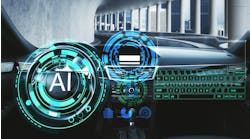What do you see as Mitchell’s position in the collision repair industry today?
The way we always describe Mitchell internally to the external world is that we exist to drive better outcomes. We recognize the important work that our clients do, which is restoring lives after a very tragic event. And then we provide technology and information services that really resolve claims, be it damage to the car or damage to the body of the car. Thematically what we think about from a technology standpoint as it relates to the collision repair shop world—and it’s been relatively consistent over my 14 years at Mitchell—is we have solutions that will help you manage the shop, manage the repair and manage the customer.
Our legacy is obviously the leadership position we’ve had in being a great provider of repair reference information, starting with the manuals and now working into what powers the estimating system or what powers TechAdvisor (a solution that provides OE repair data and procedures). Whether it’s for insurance companies or collision repairers, we’ve become a much broader technology company. We offer everything from light management system modules to very fulsome collision repair shop management solutions to customer satisfaction measurement to professional services, consulting work for acquisitions and other training. It’s really a full array of technology products and services. The Mitchell manual and what we are today are very different.
What are some of the most notable collision repair trends or issues you’re addressing?
As it relates to the repair, it’s getting very sophisticated now with things like aluminum, carbon fiber, all of the electronics now going into a car. What we’ve recently announced with BMW and integrated repair procedures, what we’ve done with Toyota and their repair operations, is somewhat emblematic of our desire to try to put the best information into the hands of repairers.
One really interesting environmental change is that over the last year or so, it’s become very apparent that the OEs want to participate much more actively in the collision repair process as part of their bigger vision for managing the lifecycle of a client. And so it’ll be really interesting for us over the next couple years. I think there will be a lot of agendas swirling around. And as a technology provider, ultimately we need to enable whatever the industry agrees to, which is the right best practice. So I will tell you over the next five years the amount of technological advances will grow. Particularly around managing the customer and also around managing the quality of repair.
As insurers continue to evaluate their claims models going forward, it’s not a surprise that DRP programs have been really important, but I think they’re getting more sophisticated and even more committed to the notion of strategic partnerships with collision repair facilities and, wherever possible, trying to help create a positive relationship with them by sending them work. So we obviously exist in many ways to provide a lot of workflow capability, be it just the estimating systems or all of the communications that take place between the collision repair shop and insurance company.
The other thing that is top of mind for me is when you look at the consumer trends—say I’m doing something that’s relatively unique like going to a restaurant for the first time or using a contractor for the first time or picking a new doctor or dentist—I’m always going online and researching who it is. And I do think that the collision repair shop needs to become more sensitive to things like digital marketing and digital brand experience, so we’re continuing to focus within RepairCenter (Mitchell’s customizable management system) on the types of technology we need to offer to help customers build a brand presence. Some body shops have done a really good job with it, others are just now getting more familiar with how big a deal it is if you can’t control your image on the Internet.
Much of your efforts have been around making “smart” products. What does that mean for repairers?
What we have today and what anybody who is in the estimating or appraisal technology service world probably thinks about going forward is it’s really about getting the right information into people’s hands at the right time to affect a quality estimate and a quality repair. In terms of the things we do today, it’s as basic as making it so that information is always delivered in real time, meaning that you’re moving away from things like thick desktop-type solutions where it’s monthly updates, to web-based solutions where you’re getting information as soon as we get it, convert it and get it into a system.
I think as you think about the future, I think a lot of us are focused on how we leverage the whole host of data that we capture in our role as a processor of claims to increase estimate efficiency and accuracy.
And in terms of making solutions smarter as well, sometimes it’s not necessarily giving people new insights, it’s how you present information to them. So for us, we think about it in two new forms. One is to visualize data versus, let’s say, tabular form, visualize it to create a better sense of performance. And can we deliver information onto multiple platforms so you don’t need to be tethered to a desktop computer in your office, but you can get it on any kind of mobile device? Technology companies as a charter are always thinking about how to deliver capability in the most effective way, leveraging technology, and how to provide data back to people in a real interesting way, how to create new capabilities that never existed before.
What’s your outlook for the industry?
It’s actually pretty good times. We’ve seen with the economy firming up a little bit, there’s a little bit of cloud out there on the global level, but no question, new vehicle sales are peaking over 18 million units here in the U.S. Canada’s strong, miles driven are going up, it’s clear that frequencies are going up as a result. I think it’s a very positive time for collision repairers.
That said, it’s very dynamic, very competitive, and 15 years ago when we may have had questions about whether large MSOs or scaled organizations could become very successful, I don’t think there’s really a question of that anymore. So while I think the next one to three years there’s no big event risk for anyone, I think it would be in everybody’s best interest to look at what things they can do to be competitive five, seven, 10 years from now.
And it’s focusing on trying to understand how to navigate the dynamics of the industry between what insurance companies are trying to do, what the OEs are trying to do, understanding the role technology plays in the middle of all of that, and how you adopt that to best position yourself to serve all constituents.



